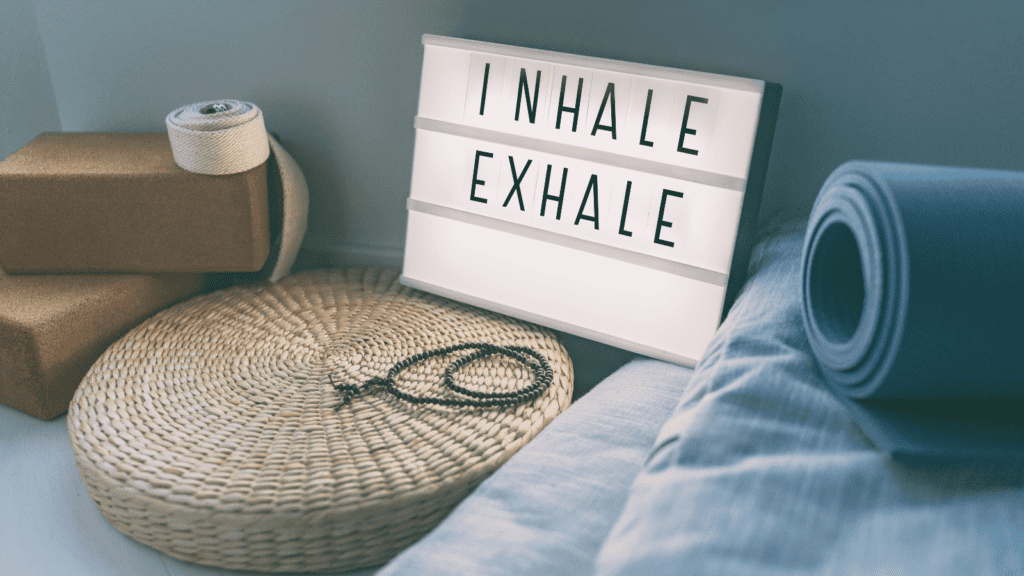 By John Mysz, LCSW VSW, CCFP
By John Mysz, LCSW VSW, CCFP
5 patients coding, 4 dogs barking, 3 impossible veins, 2 owners yelling, and one angry cat.
The hardest shift in your career?
Not likely.
Stressful?
Absolutely. You can feel the stress building, maybe get a headache or feel your body tense up. Maybe you notice you’re holding your breath randomly or you’re clenching your teeth.
So what do you do?

John Mysz, LCSW, VSW, CCFP
You chug your C4, skip lunch, grab some chocolate, and power through, right? When you get home, you’re exhausted, but your mind won’t stop and your body just feels off. Maybe it’s been like this for so long, it feels normal to you. You sleep only a few hours, with the last shift playing back in your head and wondering what’s to come tomorrow.
If it’s any consolation, you’re by no means the only healthcare worker who experiences this. I myself have and in every hospital that I’ve worked at, the vast majority of nurses, assistants, and doctors tell me habits like this. “It’s been working for me this long, why would I change it?” is frequently the question I get or at least the thought behind their response when I mention ways to change our habits. And that’s a reasonable question – we all need some homeostasis in our lives to feel like we’re in control and change can be difficult and uncomfortable. However, if you’re reading at least to this point, I’m betting there’s a part of you that would like to change and you’re just unsure where to begin.
Why not begin with something we do all the time, unconsciously, all day every day? Our breathing is one of the automatic functions of our bodies, kind of like digestion and blinking – it happens outside our awareness. However, breathing is one of the few automatic functions that we can choose to change and control when we pay attention.
This is often the basis for many meditative and mindfulness-based practices, including yoga and Mindfulness-Based Stress Reduction (MBSR). It’s so pervasive in the research literature because it’s been proven time and time again to have significant effects on our mental health, specifically depressive and anxiety-related symptoms as well as burnout and compassion fatigue.
Research has shown that the most productive time frame for breathing is somewhere between 3-6 breath cycles per minute (BCM). Even more precisely, it’s 3-4.5 BCM for those over 6 feet tall, and 4.5-6 for the rest of us (Psychophysiology). With all the research (see references), they’ve found that slowing your breath intentionally and practicing this daily can aid in alleviating symptoms of depression, anxiety, PTSD, burnout, and much more.
 For depression and anxiety, 20 minutes of daily practice for a month can bring statistically significant changes. For PTSD, it takes a bit longer at 2-3 months. What’s even better is that it can help immediately as well in soothing brief anxiety, tension, and some insomnia, particularly in brief moments of stress like at work. Much like mindfulness, the best thing about this practice is that it can be done while you’re still at work. Can you breathe before and/or after getting a jug stick? YES. Can you breathe while sedating or restraining a dog? You better be. Can you breathe during surgery? It would be pretty hard not to. Here is where to download the bell chimes to help guide you to the right BCM for you.
For depression and anxiety, 20 minutes of daily practice for a month can bring statistically significant changes. For PTSD, it takes a bit longer at 2-3 months. What’s even better is that it can help immediately as well in soothing brief anxiety, tension, and some insomnia, particularly in brief moments of stress like at work. Much like mindfulness, the best thing about this practice is that it can be done while you’re still at work. Can you breathe before and/or after getting a jug stick? YES. Can you breathe while sedating or restraining a dog? You better be. Can you breathe during surgery? It would be pretty hard not to. Here is where to download the bell chimes to help guide you to the right BCM for you.
Breath Body Mind has become somewhat of the biggest organization out there to fully lean into this idea. They’ve incorporated breathing to be aligned with the body to ease the mind, researched their hypotheses, and even hosted training for natural and man-made disaster survivors, like 9/11 and the Haiti earthquake. Here are a few introductory exercises to show you just how easy it is to do what they call coherent breathing.
 Polyvagal Theory is the driving idea behind much of this research as well as most research surrounding understanding and treating trauma, anxiety, compassion fatigue, burnout, and mindfulness. Polyvagal theory is based on the workings of the vagus nerve. This group of nerves is one of the main nerves of the parasympathetic nervous system (PNS). This nerve runs from the brain, down the spine, connecting to vital organs, and helping things like digestion and breathing. The theory is that when our bodies sense stress or anxiety, our vagus nerve goes a bit more dormant as part of the fight/flight response as our sympathetic nervous system (SNS) takes over. If we’re able to stimulate the vagus nerve, then we can reduce the impact our SNS has and activate more of our PNS.
Polyvagal Theory is the driving idea behind much of this research as well as most research surrounding understanding and treating trauma, anxiety, compassion fatigue, burnout, and mindfulness. Polyvagal theory is based on the workings of the vagus nerve. This group of nerves is one of the main nerves of the parasympathetic nervous system (PNS). This nerve runs from the brain, down the spine, connecting to vital organs, and helping things like digestion and breathing. The theory is that when our bodies sense stress or anxiety, our vagus nerve goes a bit more dormant as part of the fight/flight response as our sympathetic nervous system (SNS) takes over. If we’re able to stimulate the vagus nerve, then we can reduce the impact our SNS has and activate more of our PNS.
The other month, I watched this in action in surgery where a DVM was able to decrease a patient’s heart rate significantly by putting a little pressure just above the eye, stimulating the patient’s vagus nerve. In humans, there are many ways to stimulate this nerve, but one of the most researched ways is through our breath. When we combine this with any sort of mindfulness-based treatment like MBSR or meditation, it can have longer-term positive effects on our well-being.
 In the end, it’s your choice to make a change.
In the end, it’s your choice to make a change.
Stick with the homeostasis you know and continue functioning how you have been – after all you’ve made it this far right?
OR, may I suggest making this small change and doing a few minutes of controlled, mindful breathing a day that has been well-researched to aid in many of the symptoms you likely struggle with? If you’re having trouble finding a way out of your pain, let your breath be your guide and allow it to lead you to a more peaceful state.
Research
Effects of Yogic Breath Regulation: A Narrative Review of Scientific Evidence
Effect of Modified Slow Breathing Exercise on Perceived Stress and Basal Cardiovascular Parameters
Exploring the Therapeutic Benefits of Pranayama (Yogic Breathing): A Systematic Review
What is Cardiac Coherence Video
Practice
Mind Body Interventions to Reduce Coronavirus Pandemic Stress and Support Long-Term Recovery (PDF)
John Mysz is a Licensed Clinical Social Worker (LCSW), Veterinary Social Worker (VSW), and a Certified Compassion Fatigue Specialist (CCFP) that works closely with our team at VSC and our clients. You may reach John at jmysz@vetspecialty.com. More information about our services may be found here.
Recent Posts
About Us
Veterinary Specialty Center is a privately-owned, 24/7 emergency and specialty animal hospital located in Bannockburn, IL. Since 1976, their team of board-certified specialists has delivered advanced, compassionate care, leading the way with innovative treatments and a collaborative approach.
